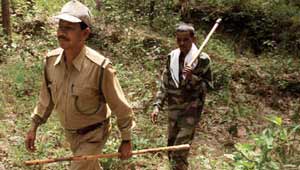Chhattisgarh ranks 20 in sewage treatment plant capacity
Raipur | Correspondent: Plans for sewage treatment and the reuse of wastewater in Chhattisgarh remain stuck in bureaucratic processes. The state government has not taken any steps to expand the sewage treatment plants or promote the reuse of treated water.
This situation is unfolding as the state faces a worsening water crisis, with more areas experiencing drought conditions and irregular rainfall becoming increasingly common.
In contrast, several states have already implemented policies to reuse wastewater, leading to significant agricultural growth.
For instance, in Kolar district, Karnataka, the reuse of treated wastewater has not only improved groundwater levels but also boosted agricultural productivity. The value of agricultural land in the region has surged by up to 118% in recent years, underscoring the benefits of wastewater reuse.
Potential in Chhattisgarh
Data from the Government of India highlights the significant potential of reusing sewage water in Chhattisgarh, particularly in urban areas where the water contributes in domestic works including washing of clothes, utensils, bathing and defecation.
Currently, Chhattisgarh releases 1203 million liters of sewage daily, yet there are only three operational sewage treatment plants. These plants collectively have the capacity to treat and reuse just 73 million liters of sewage per day.
However, the installed capacity is underutilized. According to the central government data only 8% of sewage generated in the state is being treated for reuse.
In terms of sewage treatment plant capacity, Chhattisgarh stands in 20th number whereas, Maharashtra holds the top position having 154 treatment plants treating 6890 million liters of water daily.
State Capital lacks water treatment plant
The government’s lack of urgency in addressing the sewage treatment plant in Chhattisgarh is evident, as there is not a single wastewater treatment plant in the state capital.
Bilaspur saw the establishment of its first plant in Chilhati in 2013, followed by another in Domukhani in 2018, with treatment capacities of 17 million liters and 54 million liters per day, respectively.
The third sewage treatment plant was constructed near Mini Mata Chowk in Kawardha in 2013, with a total capacity of 2.1 million liters per day.
Nutrient Recycling and Wastewater Issues in Chhattisgarh
Scientists say that recycling important nutrients like nitrogen, phosphorus, and potassium from wastewater could be helpful.
Recovering these nutrients would help reduce reliance on synthetic fertilizers.
However, wastewater treatment remains an unfulfilled goal in Chhattisgarh, and political leaders have largely avoided addressing the issue.




